#OrganicFarming and
Explore tagged Tumblr posts
Text
Organic Certification Agriculture Consultancy Services
Organic Certification Agriculture Consultancy Services
We specialize in providing expert organic certification consultancy services tailored to meet the unique needs of farmers, agribusinesses, and agricultural entrepreneurs. With our guidance, you can navigate the complex process of organic certification seamlessly and unlock the numerous benefits of certified organic production.
Why Choose Organic Certification Agriculture Consultancy?
Organic certification is more than just a label — it’s a commitment to sustainable farming practices, environmental stewardship, and consumer trust. Here’s why investing in our consultancy services is crucial for your organic certification journey:
Elevate your agricultural practices with our #OrganicCertification services, featuring top-notch #AgriConsulting and #AgricultureConsulting for #OrganicFarming and #OrganicAgriculture. Our #FarmConsultancy ensures #SustainableFarming solutions tailored for your #AgriBusiness needs. Adhere to #OrganicStandards with our comprehensive #AgriSupport, empowering #FarmersLife with #AgriInnovation and expert #FarmingAdvice. Committed to #SustainableAgriculture, we offer superior #FarmManagement and #AgriSolutions for achieving #CertifiedOrganic status. Embrace #GreenFarming with our guidance on #OrganicProduce, driving #FarmSuccess through strategic #AgriDevelopment and #OrganicFarmingCertification. From #FarmPlanning to continuous #AgricultureSupport, our consultancy fosters #AgriGrowth. Partner with us for exceptional #AgricultureConsultancy and #AgribusinessConsultancy, guided by experienced #AgricultureAdvisor and #AgricultureAdvisory services. Trust our #AgricultureExpert team to enhance your #OrganicCertification journey. We also focus on #MarketAccess, #SEO, #DigitalMarketing, and building #ConsumerTrust for your organic brand.
Please visit following Page for more Details
#Elevate your agricultural practices with our#OrganicCertification services#featuring top-notch#AgriConsulting and#AgricultureConsulting for#OrganicFarming and#OrganicAgriculture. Our#FarmConsultancy ensures#SustainableFarming solutions tailored for your#AgriBusiness needs. Adhere to#OrganicStandards with our comprehensive#AgriSupport#empowering#FarmersLife with#AgriInnovation and expert#FarmingAdvice. Committed to#SustainableAgriculture#we offer superior#FarmManagement and#AgriSolutions for achieving#CertifiedOrganic status. Embrace#GreenFarming with our guidance on#OrganicProduce#driving#FarmSuccess through strategic#AgriDevelopment and#OrganicFarmingCertification. From#FarmPlanning to continuous#AgricultureSupport#our consultancy fosters
0 notes
Text
Awesome Queer Farmer Blog
Dropping the link to my queer, solarpunk, anti-capitalist farm blog again. Costs nothing to join the listserv; if you don't want to make a Substack account, message me and I'll just add you!!
#lgbtqia#community#regenerativefarming#queerfarming#queerfarmer#multi-genderfarmer#writing#blog#monthlyposts#funfarmphotos#solarpunk#anticapitalism#gifteconomy#organicfarming#organics#freefood
6 notes
·
View notes
Text
#OrganicGardening#HomeGarden#GrowYourOwnFood#SustainableLiving#GardeningForBeginners#UrbanGardening#OrganicFarming#GreenLiving#GardenTips#SelfSufficiency
2 notes
·
View notes
Text





Soon to be Unleashed on Ripkitty.com: CFX-2 Hemp Seeds
CFX-2’s got that edge, the one that separates it from every other damn hemp seed out there. These beauties don’t just grow—they dominate. Built for organic systems, they’re the heavy hitters that Canadian and U.S. growers are begging for. Why? Let’s break it down.
You’re looking at seeds that scream consistency. Uniform structure like a well-oiled machine, making harvesting a breeze. Breeders love ‘em, but it’s the organic growers who are truly obsessed. The reason? Pure vigor. This beast of a plant isn’t just tall—it towers, casting shade on any weeds dumb enough to try and compete. Plus, CFX-2’s got that nutrient-scavenging instinct, thriving even when the soil’s on the lean side.
These close-up shots? They don’t lie. Look at that thick, robust shell, radiating raw energy waiting to burst. Each seed is a promise of strength, a guarantee of harvest-ready power. You can almost feel the weight of their potential through the screen.
#CFX2#HempSeeds#OrganicFarming#Canada#US#TallGrowth#WeedControl#NutrientScavenger#EcoWarrior#SoonOnRipkitty#Ripkitty#RipkittyNetwork#RipkittyRecords#RipkittyGlass#Rip Kitty#RipkittyOrganization
2 notes
·
View notes
Text
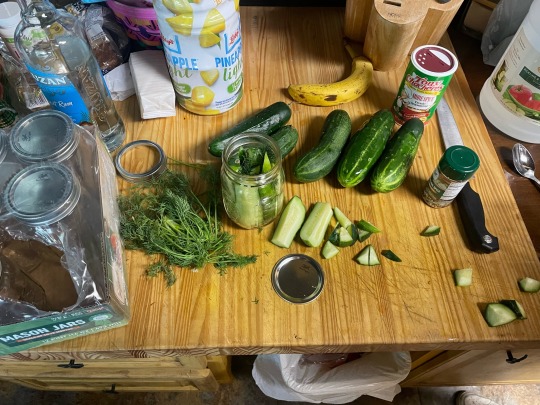
The cucumbers are ready pickle time
29 notes
·
View notes
Text


July, Harvest Time
Our neighbor Luciano told us that wheat was once cultivated in Lemmen. He reported that the community square, where the small church now stands (originally a farmhouse ruin donated to the people of the village to make it their chapel), was once slightly concave precisely to allow for the threshing of wheat.
This supports the hypothesis that Lemmen was one of the primordial settlements in the area that later gave rise to the village of Riomaggiore. Some of its terraces, exceptionally wide compared to the average, allowed for the sowing of wheat for the community.
We wanted to conduct an experiment to commemorate ancient times and to add another small piece to the biodiversity and varied food production of Stella di Lemmen.
Wheat has always been the food of man. The collection of spontaneous species that constituted its origins - a natural hybridization between pseudocereals and grasses - began with Paleolithic man and stabilized in the Neolithic with the practice of agriculture. Today wheat is cultivated all over the world - it is the second most produced cereal after corn and hundreds of species are counted - but it was already placed in Egyptian tombs as "food to take to the afterlife", and described in the Gospel of John by Jesus as a symbol of resurrection, through the analogy of the grain that dies to give the ear, survival, eternal life.
We wanted to reintroduce the cultivation of wheat in our farm, as a symbol of rebirth linked to food, nutrition, and prosperity. We have sown an ancient Lucchese wheat that has grown healthy and strong. Now that we have harvested and threshed it, all that remains is to make bread. We hope it is a good omen of growth and transformation for all humanity.
Luglio, tempo di mietitura
È stato Luciano (Bonanni n.d.r.) a raccontarci che a Lemmen un tempo si coltivava il grano. Ci ha riferito che la piazzetta della comunità, dove si affaccia ora la piccola chiesa (in origine un rudere contadino donato alle genti del borgo perché ne facessero la loro cappella), un tempo era leggermente concava proprio per permettere la battitura del grano.
Questo avvalora l’ipotesi che Lemmen fosse uno degli insediamenti primordiali della zona che in seguito diedero origine al paese di Riomaggiore. Alcune delle sue fasce, eccezionalmente larghe rispetto alla media, consentivano di seminare il grano per la comunità.
Noi abbiamo voluto fare un esperimento che commemorasse i tempi antichi, per aggiungere un altro piccolo tassello alla biodiversità e alla variegata produzione alimentare di Stella di Lemmen.
Il grano è da sempre il cibo dell’uomo. La raccolta delle specie spontanee che costituirono le sue origini - una naturale ibridazione tra pseudocereali e graminacee - iniziò con l’uomo del Paleolitico e si stabilizzò nel Neolitico con la pratica dell’agricoltura.
Oggi il grano è coltivato in tutto il mondo - è il secondo cereale per produzione dopo il mais e se ne contano centinaia di specie - ma venne già riposto nelle tombe egizie in quanto “alimento da portare nell’aldilà”, e descritto nel Vangelo di Giovanni, da Gesù, come simbolo di resurrezione, attraverso l’analogia del chicco che muore per dare la spiga, la sopravvivenza, la vita eterna.
Ci tenevamo a riproporre la coltura del grano nella nostra azienda, come simbolo di rinascita legato al cibo, all’alimentazione, alla prosperità. Abbiamo seminato un grano antico lucchese che è cresciuto sano e forte. Ora che l’abbiamo mietuto e battuto, non resta che fare il pane. Speriamo sia buon auspicio di crescita e di trasformazione per l’intera umanità.







3 notes
·
View notes
Text
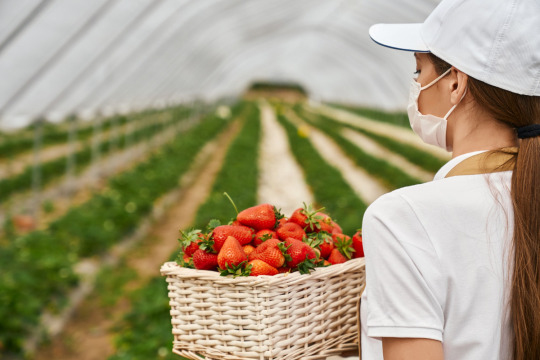
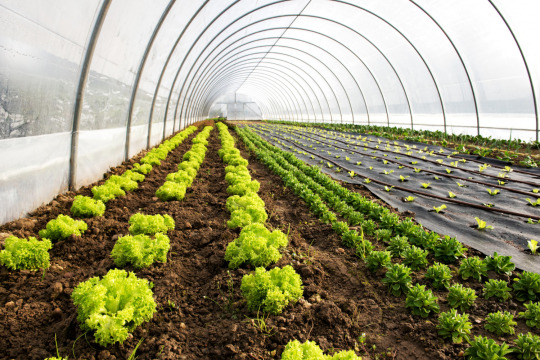
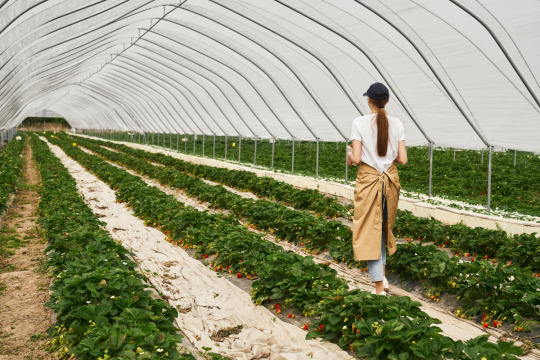
Why should you start organic farming 🎋🌿🌱☘️☘️🌾🌾🎋 via polyhouse structure? Indian government announced a big farming scheme for the farmers. 🌿🌱🎋🌾🎋🌿🌱🎋🌾🎋🌿🌱🎋🌾🎋🌿🌱🎋🌾🎋🌿🌱🎋🌾🎋🌿🌱🎋🌾🎋 In this scheme farmers get 50% subsidy of your poly farming invested price. it not fixed for all indian states, here are different subsidies options for different states.
🌾🌾 𝐇𝐮𝐫𝐫𝐲𝐮𝐩 𝐟𝐨𝐫 𝐨𝐫𝐠𝐚𝐧𝐢𝐜 𝐟𝐚𝐫𝐦𝐢𝐧𝐠: +𝟗𝟏 𝟗𝟖𝟏𝟏𝟒𝟓𝟗𝟒𝟖𝟖
2 notes
·
View notes
Text
Randall Randy Konsker Guide The Top Benefits of Organic Farming You Need to Know
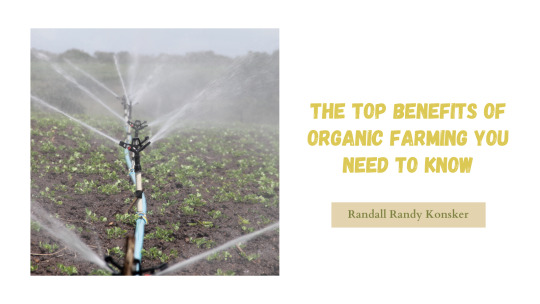
Organic farming has gained significant traction in recent years as consumers become increasingly conscious of their food choices and the impact of agriculture on the environment. Organic farming, characterized by the use of natural methods and avoiding synthetic pesticides and fertilizers, offers a range of benefits that extend beyond personal health. Randall Randy Konsker's guide we will explore the top benefits of organic farming and why it is gaining popularity worldwide.
1. Environmental Sustainability
One of the primary advantages of organic farming is its commitment to environmental sustainability. Organic farming methods prioritize soil health through practices such as crop rotation, cover cropping, and composting. By avoiding synthetic chemicals, organic farmers protect biodiversity, promote healthier ecosystems, and reduce the risk of soil erosion. This approach helps maintain the long-term fertility of the soil and minimizes the environmental impact of agriculture.
2. Reduced Chemical Exposure
Conventional farming relies heavily on synthetic pesticides and fertilizers to boost crop yields. However, the residues from these chemicals can end up in the food we consume, posing potential health risks. Organic farming eliminates or significantly reduces the use of synthetic chemicals, providing consumers with produce free from harmful residues. This reduction in chemical exposure has been linked to lower risks of certain health issues, making organic food an attractive choice for health-conscious individuals.
3. Improved Soil Health
Organic farming focuses on building and maintaining healthy soil. Practices such as crop rotation, cover cropping, and the use of organic matter like compost enhance soil structure, water retention, and microbial activity. Healthy soils support robust plant growth, increase nutrient content in crops, and contribute to overall ecosystem resilience. Additionally, the absence of synthetic fertilizers in organic farming prevents soil degradation, ensuring a sustainable and fertile environment for future generations.
4. Enhanced Nutritional Content
Several studies suggest that organic crops may have higher nutritional content compared to their conventionally grown counterparts. Organic farming practices, which prioritize soil health and diversity, often result in crops with increased levels of essential nutrients, antioxidants, and vitamins. This nutritional boost can positively impact human health and contribute to a well-rounded and balanced diet.
5. Support for Local Economies
Organic farming often occurs on a smaller scale and is more likely to be practiced by local farmers. Choosing organic products supports local economies by providing income and employment opportunities within communities. Additionally, the emphasis on local distribution reduces the carbon footprint associated with transporting goods over long distances, contributing to a more sustainable and resilient local food system.
6. Water Conservation
Organic farming practices prioritize efficient water management through techniques such as mulching, drip irrigation, and water-conserving cover crops. By minimizing water usage and runoff, organic farming helps conserve this precious resource. This is particularly crucial in regions facing water scarcity, as sustainable agricultural practices become essential for maintaining a reliable and resilient food supply.
Conclusion
The benefits of organic farming extend far beyond the individual consumer, reaching into the realms of environmental sustainability, public health, and local economies. Randall Randy Konsker says by choosing organic products, consumers play a vital role in supporting farming practices that prioritize the well-being of the planet and its inhabitants. As the demand for sustainable and ethically produced food continues to grow, organic farming stands as a beacon of a more conscientious and environmentally friendly approach to agriculture.
2 notes
·
View notes
Text
#agrotourism#farmvisit#nature#ecotourism#farmstay#agriculture#farming#kisanecofarmandhomestay#farm#organicfarm#agro#kisan
2 notes
·
View notes
Text

Beetroot is a very easy-to-grow vegetable that suffers from very few pests and diseases. The plant is generally easy to grow and is consistently ranked as one of the top 10 vegetables grown in home gardens. Beetroot is a cool-season vegetable crop.

This root veggie grows quickly and has many different varieties, which showcase deep red, yellow, or white bulbs of different shapes. It's nutritious, and you can eat both plant and root. This vegetable can survive frost and almost freezing temperatures, which makes it a great choice for northern gardeners and an excellent long-season crop.
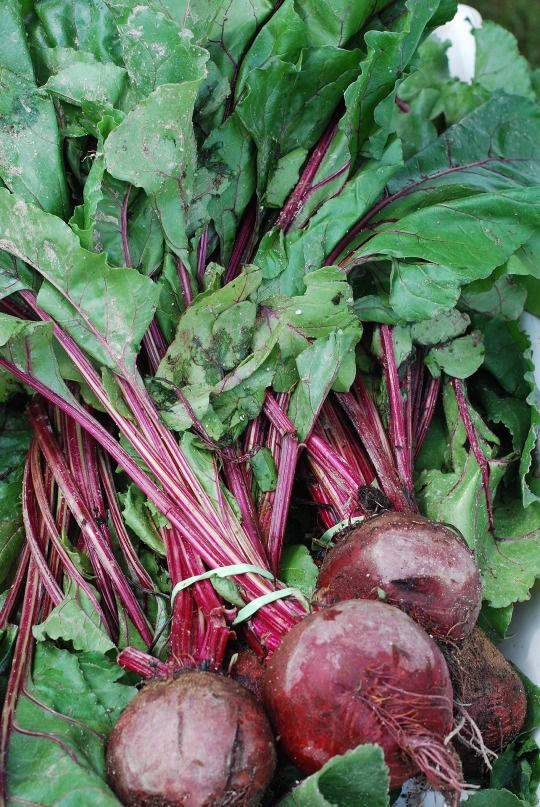
Keep reading; I'll teach you how to grow your own organic beetroot...
#gyo#lovegardening#gardening uk#gardenchat#gardening tips#gardening#garden#organic gardening#vegetable gardening#backyard#beetroot#beets#vegetables#vegetablegardening#growingvegetables#growingveggies#gardeningtips#organicgardening#organicfarming#growyourownfood#growyourownveggies#home and garden#gardenblr#gardencore#gardeners on tumblr#gardens#my garden#potted garden#urban gardening#vegetable garden
3 notes
·
View notes
Text

Weingartenpfirsichhof
www.weingartenpfirsichhof.com
TRUTH Bitterzitronenlikör
Renate Egger and Wilhelm Roseneder
Source: weingartenpfirsichhof.com
#renate egger#wilhelm roseneder#photography#Vineyardpeachfarm#Truttendorf/Carinthia#Grafenstein/Carinthia#Weingartenpfirsichhof#landscape gardening#Bitterzitrone#Bitterlemon#organicfarming#Biologische Landwirtschaft#Carinthia#Austria#landscape#TRUTH#Bitterzitronenlikör
7 notes
·
View notes
Text
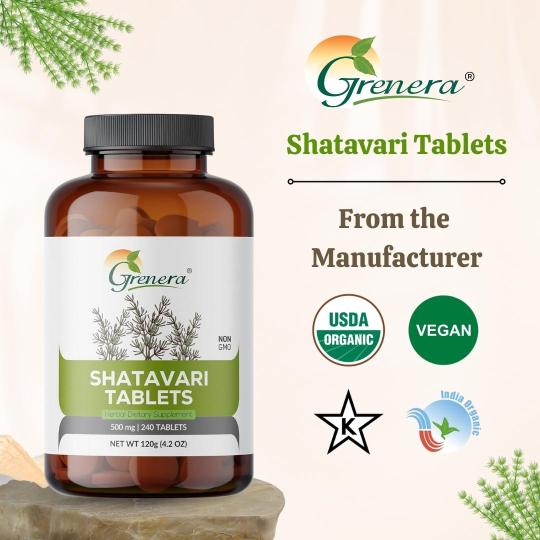
🌿 Discover the Power of Shatavari Tablets! 💪🌱 🌸 Boost Women's Health 🌿 Aid Digestion 🌟 Support Immunity 🌼 Balance Hormones 🌾 All-Natural & Holistic Wellness 📦 Shop Now for Your Well-Being
📚 Learn more on our website 👇 -------------------------------- To shop, Please Visit www.greneraorganics.in -------------------------------- WhatsApp - 99449 97512 --------------------------------
2 notes
·
View notes
Text
Enjoy the Harvest Celebration and Fall Foliage @ Husky Meadows Farm Stay
Some of the most stunning fall foliage in the Litchfield Hills and Southern Berkshires peak during the second and third week of October making it an age-old New England tradition to celebrate the harvest. This autumn, Husky Meadows, a certified organic farm, is capping off the season with a Harvest Celebration Farm Stay from Friday, October 20, through Sunday, October 22 – think wool sweaters,…

View On WordPress
#cookingclass#cookingclassesforcouples#farmstay#farmtotable#HuskyMeadowsFarm#norfolkct#organicfarm#SeedandSpoon#Connecticut#connecticut events#Connecticut Travel#Ct News#farmstayusa#Litchfield Hills#Litchfield Hills CT#New England#Norfolk#things to do in CT
3 notes
·
View notes
Text
How To Grow Organic Lettuce Hydroponically
Growing lettuce hydroponically is an excellent way to produce fresh and healthy greens year-round. Here's a step-by-step guide on how to grow lettuce hydroponically: Choose the Right Lettuce Variety: Select a lettuce variety suitable for hydroponic growing. Leafy and loose-leaf lettuces like Butterhead, Romaine, and Bibb are well-suited for this method. Set Up the Hydroponic System: Choose a hydroponic system that fits your space and needs. Common types include nutrient film technique (NFT), deep water culture (DWC), or a vertical tower system. Provide Proper Lighting: Ensure your lettuce plants receive adequate light. LED grow lights are ideal for hydroponic setups, providing the right spectrum and intensity for plant growth. Nutrient Solution: Mix a hydroponic nutrient solution according to the manufacturer's instructions. Lettuce requires a balanced mix of nutrients, including nitrogen, phosphorus, potassium, and trace elements. Planting: Start lettuce seeds in rockwool cubes or another hydroponic medium. Once seedlings have developed a few leaves, transfer them to the hydroponic system. Maintain Water Levels: Keep the water level in the hydroponic system consistent. Lettuce prefers a slightly moist environment, but avoid waterlogging the roots. pH Level: Regularly monitor and adjust the pH level of the nutrient solution. Lettuce thrives in a pH range between 5.8 and 6.5. Temperature: Maintain the ideal temperature for lettuce growth, which is around 60-70°F (15-21°C). Avoid extreme heat, as it can cause bolting and bitterness in the leaves. Air Circulation: Adequate air circulation is essential for healthy plant growth and to prevent mold or mildew issues. Harvesting: Lettuce can be harvested as soon as the leaves reach a desirable size, usually 4-6 weeks after planting. Use clean scissors or a sharp knife to cut the leaves just above the base of the plant. Succession Planting: To ensure a continuous supply of lettuce, practice succession planting by starting new seedlings every few weeks. Clean and Maintain: Regularly clean and disinfect the hydroponic system to prevent algae or bacterial growth. Proper maintenance will promote healthy lettuce growth. By following these tips and providing the right conditions, you can enjoy a steady supply of fresh and nutritious lettuce from your hydroponic garden. Happy hydroponic gardening! https://gardenguide4all.com/how-to-grow-organic-lettuce-hydroponically/ Read the full article
2 notes
·
View notes
Text
instagram
#organicfood#organicfarming#healthyself#glutenfreefood#rice#foodislife#pure#navararice#kaaduorganics#Instagram
2 notes
·
View notes
Text
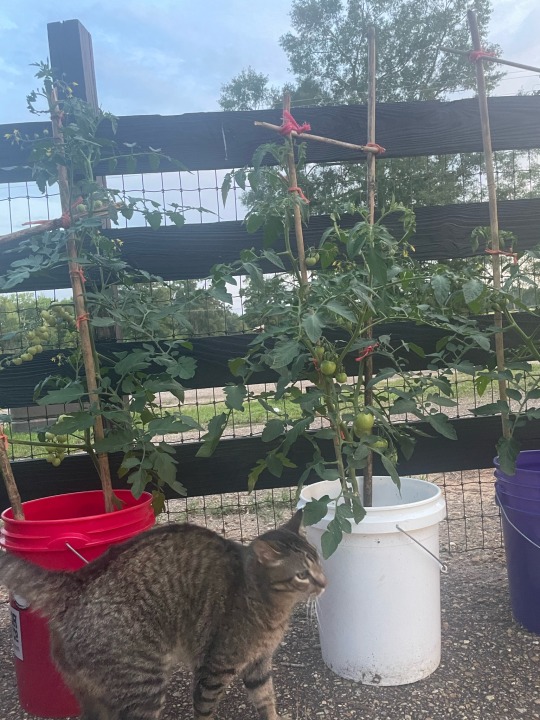

Tomato inspection. Mikey said things are looking good
#garden#farmcore#organicfarming#kitty#farmblr#organic#tomatoes#cherry tomatoes#no till#organicfood#farm animals
10 notes
·
View notes